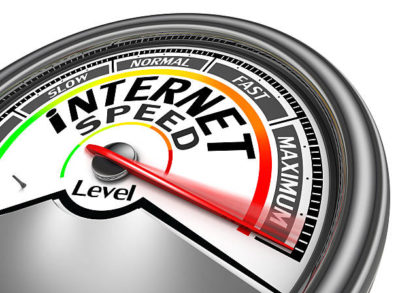A report published by Ofcom in the United Kingdom details amazing new feats of data transmission speed using a single fiber optic cable. As New Atlas notes, the average data speed in the country is approximately 70 megabits per second (Mb/s). While this is more than adequate for emailing a friend or watching the latest adorable cat video, more demanding data processing applications need more responsive speeds.
Multi-fiber optic transmissions have yielded speeds that are measured in terabits per second (Tb/s) with the latest record breaking data speed being recorded in petabits. A petabit represents one million gigabits, with the current transmission speeds clocking in at 22.9 petabits per second.
Relying on just a single fiber optic strand, researchers at Aston University in the U.K., in conjunction with researchers from Nokia Bell Labs in the U.S. and Japan’s National Institute of Information and Communications Technology, have managed to compress 301 Tb/s through a single standard fiber optic cable. Although traditional fiber optic transmissions use C- and L-bands, the researchers capitalized on the co-existing E- and S-bands. The additional wavelengths allow them to send stable data through a single fiber to achieve a huge boost in data speed.
“Such bands traditionally haven’t been required because the C- and L-bands could deliver the required capacity to meet consumer needs,” explained researcher Ian Phillips. “Over the last few years, Aston University has been developing optical amplifiers that operate in the E-band, which sits adjacent to the C-band in the electromagnetic spectrum but is about three times wider. Before the development of our device, no one had been able to emulate the E-band channels in a controlled way properly.”
The team developed new types of optical amplifiers and optical gain equalizers to stabilize the transmission through the additional bands. The techniques they employed used pieces of existing equipment that are already used to boost and adjust the beams of data-carrying light streams through newly available bands within the fiber optic cables. New Atlas noted that the researchers described their efforts as an affordable and ecologically friendly way to expand service along the information superhighway.
“Growing system capacity by using more of the available spectrum – not just the conventional C-band but also other bands such as the L, S, and now E-bands can help to keep the cost of providing this bandwidth down,” stated researcher Wladek Forysiak from Aston Institute of Photonic Technologies. “It is also a ‘greener solution’ than deploying more, newer fibers and cables since it makes greater use of the existing deployed fiber network, increasing its capacity to carry data and prolonging its useful life and commercial value.”





Reader Interactions